Evidende of Ancient Electrical Devices found in the Great Pyramid?
June 2, 2011
New images from inside lsthe Great Pyramid shaft reveal evidence of electrical terminals, cables and even ancient wiring diagrams!
The discovery of electrical contacts and wiring inside the Great Pyramid, along with markings that show how to connect them, do not fit anywhere in conventional Egyptology but confirm the theory first published in my book, The Giza Power Plant: Technologies of Ancient Egypt in 1998.
Only this theory has ever made such predictions, and every robot explorer they send up the shafts finds more and more evidence to prove that the theory is correct.
Background and details follow:>
The Great Pyramid has long been a source of mystery for the world. Specialists and lay people alike have been drawn to what it might tell us about our ancient past, with a variety of theories being offered for consideration. While there are over a hundred pyramids in Egypt, the majority of them, while important and significant themselves, seem all to be cast in the shadow of the Great. What is it about this pyramid that makes it so GREAT?
Going back as far as the 17 century, there are accounts of numerous explorations into the Great Pyramid that have yielded significant new details of the structure. In more recent times, a flurry of excitement has surrounded the mystery of a small shaft discovered in 1872 in the wall of the Queen’s Chamber. This shaft did not connect to the chamber and was discovered after a rod was pushed into a small crack in the wall and, after meeting no resistance, prompted Waynman Dixon, a British explorer, to have the limestone chiseled away revealing a rectangular opening that measured 20.32 cm (8.00 in) wide and 22.35 cm (8.8 in) high. A similar shaft was subsequently found in the north wall.
In 1993, a German robotics engineer, Rudolph Gantenbrink, on contract to install ventilation fans in the King’s Chamber shafts after cleaning the debris using a robot, proposed that he use his robot, named “Upuaut II”, meaning “opener of the ways”, to explore the Southern Shaft in the Queen’s Chamber to coax from the depths of pyramid more of its secrets. While the exits from the shafts from the King’s Chamber are found on the outside of the pyramid, no exit has ever been found for either of the Queen’s Chamber shafts.
Because of the machine like technical appearance of the Great Pyramid and the precision with which it was built, in 1977, I began developing a theory that the original function of the Great Pyramid was not a tomb but a power plant. Within the context of the power plant, all its attributes and anomalous features that other theories were unable to explain without resorting to religious symbolism, found a practical answer. The Queen’s Chamber, I proposed, served as a reaction chamber and the shafts leading to this chamber supplied two chemicals that when mixed together created hydrogen. In 1993 I was viewing the exploration by Gantenbrink and when Upuaut II came to the end of the shaft, what is now famously known as Gantenbrink’s “door” came into view with two metal pins attached.
Jeff Summer, a friend with whom I was watching the video, immediately claimed that they looked like electrodes. This made sense to me for in order to maintain the head pressure in the shafts, they had to be kept full and the electrodes would serve as a switch to signal replenishment. In 1998, my book, The Giza Power Plant, was published incorporating this theory.
Then in 2002, to much fanfare and excitement, “Opening of the Lost Tomb”, which offered to show live the exploration of the Queen’s Chamber southern shaft drilled through the limestone block with the metal fittings and then insert a camera through the hole to see what was behind it. Broadcast in Europe by National Geographic and in the US by Fox Television the documentary capture 30 million viewers in the US alone.
Since the publication of my book and prior to the broadcast I posted three articles on my website explaining my reasoning behind my analysis of these shafts and what would be revealed if we were able to look behind it. Based on what I wrote in The Giza Power Plant, the last article outlined a prediction of what would be found behind the block. The prediction included a drawing of the continuation of the metal fittings, or wiring attached to them, and a chemical supply shaft for the delivery of the chemical.
The results were not conclusive, but parts of the theory were supported – particularly the thickness of the block. However, what has recently been revealed shows that my design was not quite correct. The ancient Egyptians’ design was much better and provided greater evidence to support my theory than I had hoped for!
In an article published on May 25, 2011 in New Scientist online magazine, the latest exploration of the Southern Shaft in the Great Pyramid’s Queen’s Chamber provides new information that answers the question of what the back of this block looks like. A new robot has been sent up this shaft and had taken more images behind a stone block. (The shaft due to its small size could only allow a small animal to pass and Gantenbrink does not call the block a “door” as it has been name by Egyptologists, but a USO, or Unidentified Stone Object – a nomenclature that I will adopt for purposes of this article.)
I was astonished that information regarding this long awaited exploration had been released without fanfare. Zahi Hawass, the minister of antiquities in Egypt, and director of this recent expedition, described these internal features as the “last great mystery of the Great Pyramid.” With the last exploration broadcast on Fox television in the US garnering 30 million viewers, why was National Geographic or Fox television not involved?
Reading the article and looking at the grainy images of the back of the stone block with the metal fittings first detected by Gantenbrink’s robot, it became clear that the author and expedition team members were aware of the power plant theory. Rowan Hooper writes, “Metal is not part of any other known structure in the pyramid, and the discovery ignited speculation that the pins were door handles, keys or even parts of a power supply constructed by aliens.” Unfortunately, comments like these are not helpful. As the first person to publish a work that described the pins as electrical devices, I must set the record straight that I have never credited the construction of the Great Pyramid to aliens, or any other people except the indigenous people living in that area at the time. Moreover, the discovery of the pins in 1993 was not the trigger that gave birth to the idea that the Great Pyramid was a power plant; they simply enhanced the proposed use that I had formulated in 1977 for the Queen’s Chamber and the shafts.
Shaun Whitehead the camera designer from the company Scoutek in Melton Mowbray, UK said “Our new pictures from behind the pins show that they end in small, beautifully made loops, indicating that they were more likely ornamental rather than electrical connections.”
Egyptologist Kate Spence, of the University of Cambridge, UK, indicated that the USO would have served a symbolic purpose, a door with door handles. This notion has been proposed before. Without knowing what the rest of the metal looked like these features were described as symbolic door handles for the King to use to symbolically raise the door so that his soul can fly off to the stars to which the pyramid shafts are allegedly aligned.
The continuation of the pins on the backside of Gantenbrink’s USO was not the only discovery captured by the new robot. The images also revealed a line and some symbols painted on the floor in red. Peter Der Manuelian, an Egyptologist at Harvard University and director of the Giza Archives at the Museum of Fine Arts, Boston, said “Red-painted numbers and graffiti are very common around Giza. They are often masons’ or work-gangs’ marks, denoting numbers, dates or even the names of the gangs.”
There was no immediate explanation for what these red symbols mean, but they are a significant discovery and have the potential to open up an entirely new area of research in gaining an understanding of ancient Egyptian symbolism. When considered along with the metal pins the symbols provide all the evidence necessary to prove the electrical use of the pins and also give us a roadmap for exploration into the future. Not only did the ancient Egyptians leave us with the physical evidence that proves this to be so, they also provided us with an electrical schematic that showed how the pins were wired!
The first most important discovery is the design of the two pins. Judging by their relationship to the size of the space, the pins are approximately .8 cm 5/16 inch in diameter. Figure 1 shows the metal looping around, with an apparent gap where the loop on the right pin seemingly disappears into the limestone block. The left pin shows signs of corrosion, similar to those in the main shaft, though not as severe. There also seems to be a white deposit around the left pin and its hole, while the right pin has what appears to be a black ring encircling the hole that penetrates through to the main shaft.
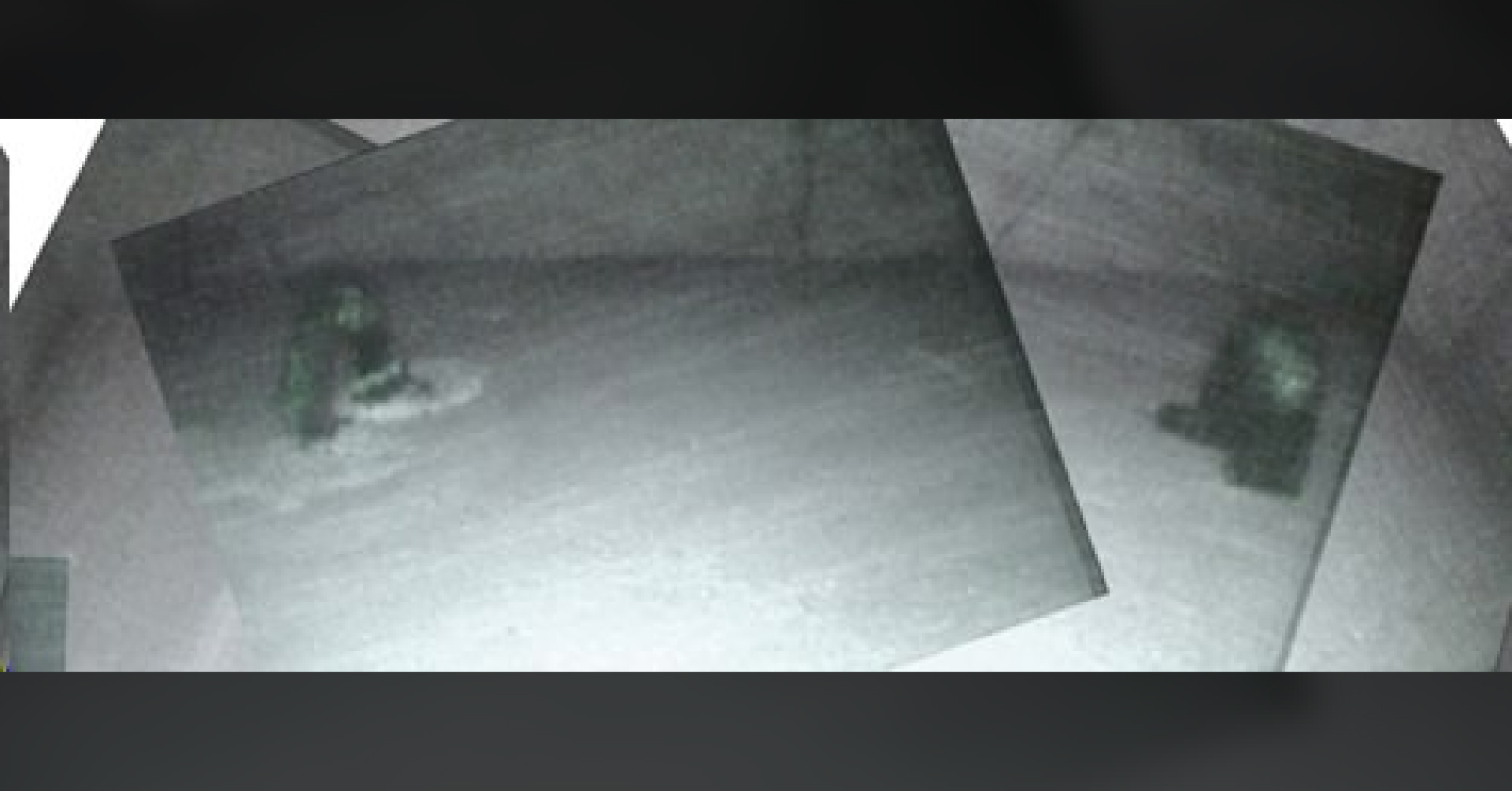
Figure 1. The Backside of Gantenbrink’s USO showing the looped metal pins.
http://www.newscientist.com/data/images/ns/cms/mg21028144.500/mg21028144.500-3_500.jpg
As these images did not match those that I had predicted, the expedition team evidently believed that the controversy had been settled and that that they served as more mundane object and not electrical devices. This conclusion certainly would be more acceptable to those who hold the keys to the pyramid and control what information is given to the public. What was not noted in the report is what appears to be corrosion on one of the pins.
Nor was evidence of flexible conduit curling out of the top of the USO near the center and traveling along the ceiling mentioned. (See Figure 2)

Figure 2. Enhanced photograph of the features behind Gantenbrink’s USO.
http://www.newscientist.com/data/images/ns/cms/mg21028144.500/mg21028144.500-3_500.jpg
The image of the floor behind the USO is especially intriguing (see Figure 3 & Figure 4). The patchwork of video captured and stitched together images reveals a wealth of information. The helical wraps of more flexible conduit can be seen lying on the floor near the bottom of the image just left of the red painted line – probably left there by the maintenance crew. The metallic appearance of this object and the helical turns of the metal has the same appearance as a length of flexible conduit that has been pulled apart while being disassembled would have. There are indication of more lengths of this material on the floor that are not as distinct as this one. Also just above and to the right of the red line is what appears to be an opening in the floor with anomalous objects nearby and one of them seeming to disappear into the opening. If it is proven that this is indeed a rectangular hole in the floor, is this the chemical supply shaft, will it be found elsewhere?

Figure 3. An example of flexible conduit used for industrial wiring applications
http://www.grainger.com/Grainger/LIQUATITE-Flexible-Aluminum-Conduit-3FLF2?Pid=search

Figure 4 The floor in the space behind Gantenbrink’s USO
http://www.newscientist.com/data/images/ns/cms/mg21028144.500/mg21028144.500-1_500.jpg
While it appears that the maintenance crew did not clean up after performing repairs in the space behind the USO, the debris was not the only evidence they left there. They also left instructions on how to wire the pins! These instructions were painted as symbols onto the floor and represent a simple wiring diagram. The uppermost symbol – depicted as a number 5 with the lower loop almost closed, represents the left connector through which the pin is pushed until the end of the loop meets the limestone. The pin was probably tapered at the end which allowed it to enter the loop and gradually push it open while the connector loop held onto the pin as it tried to achieve its original shape. The vertical leg of this connector is not to scale (as very few wiring diagrams are) but the actual connector probably had a longer vertical leg up to the point when it is bent at right angles towards the center of the block.
The center symbol that shows a round circle with a forked line below it could represent the cable through which electricity flowed. It is positioned between the upper and lower connector symbols on the floor as the flexible conduit is positioned between the right and left pins in the USO.
The lower connector symbol is roughly similar to the upper with the exception of the top bend, which could go right or left as when installed it wouldn’t matter which way the loop was turned.
All the symbols, including the line (which would logically represent the main cable coming from the USO) were more than likely positioned on the side that would identify the positive electrode. This is supported by the appearance of a greater amount of corrosion on the loop on the side where the symbols appear.
All of that which is revealed by the Djedi robot describes an electrical device which was accessible to workers for maintenance. Considering the erosion on the pins in the main shaft (the negative electrode having broken off in antiquity) and considering the extreme tapering that was more than likely caused by the rise and fall of a corrosive liquid, another significant conclusion that can be made is that these electrodes must have been replaced periodically. At the same time, the electrical cables were probably replaced and some of the shielding was left in the space. The entire design supports this view! The pins were made so that they could be removed easily and another one put in its place. Also, seating the lower loop into a blind hole would prevent the electrode from turning in the hole. After it was seated in position, the pin protruding into the main shaft would be bent 90 degrees and fixed securely in operating position.
Gantenbrink’s Upuaut II also revealed another important feature about the electrodes. After they were positioned in the hole, a sealant was applied and this can be seen clearly in Figure 5.
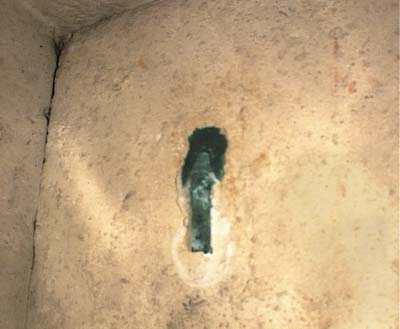
Figure 5. Gantenbrink’s USO showing the metal pin with sealant around it.
http://www.cheops.org/startpage/thefindings/thelowersouthshaft/leftfit.JPG
The implications of this analysis are stunning. They clearly indicate that there is access to the end of the Queen’s Chamber shafts and a passageway or passageways exist(s) within the pyramid. This lends support for Pierre Houdin’s internal ramp theory and suggests that it indeed exists for access not just to the Queen’s Chamber shafts, but also other parts of the structure – whether they are working parts or not.
Besides prompting further exploration in the Great Pyramid, to find ancient symbols and to be able to clearly connect them with a previously unknown aspect of human activity in millennia past is extremely exciting. It opens up a whole new area of study using knowledge and tools that have been previously excluded from ancient Egyptian studies.
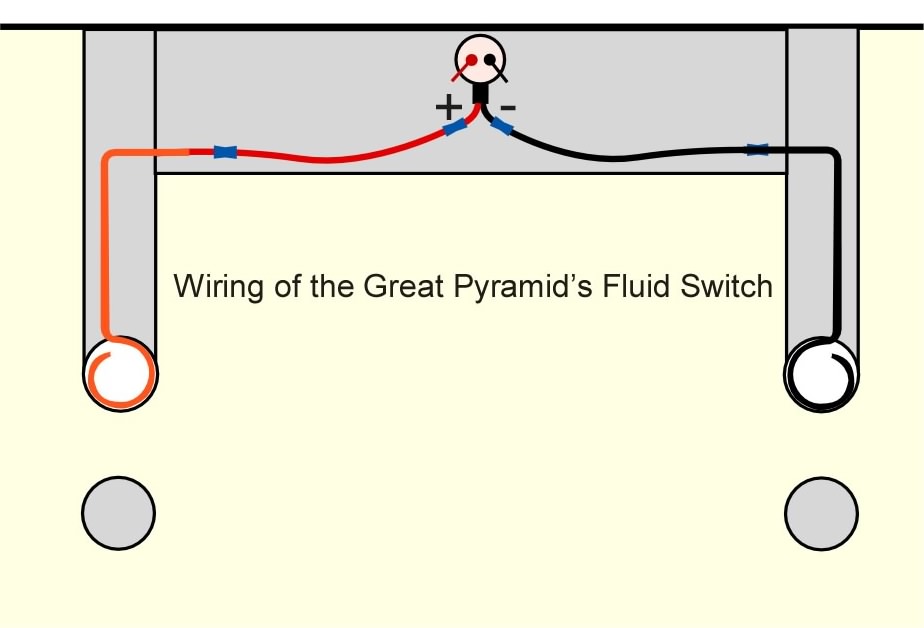
Figure 6. The internal cavities of the USO with connectors and wiring.
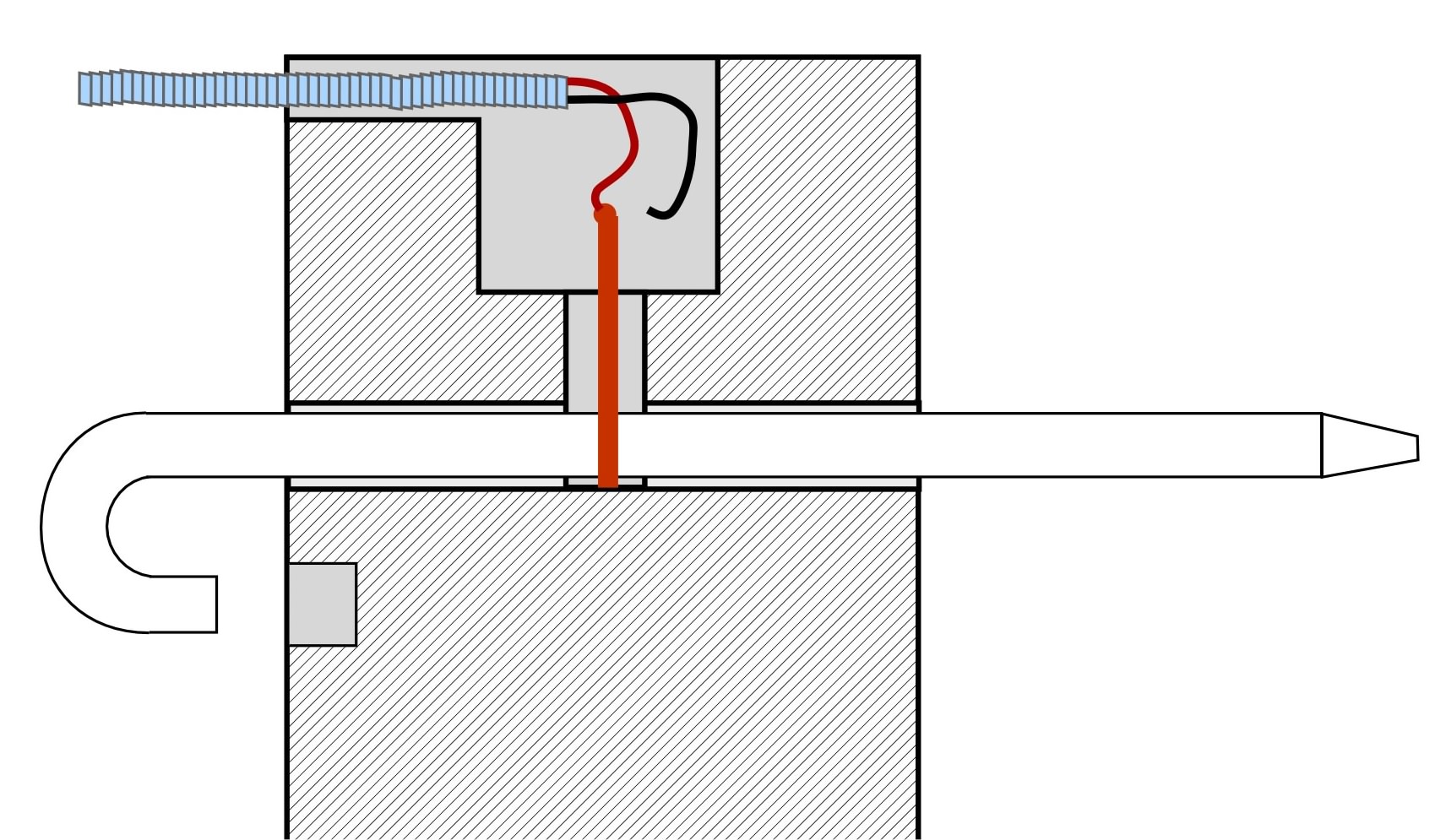
Figure 7. The electrode being pushed through the copper connector located inside the hole
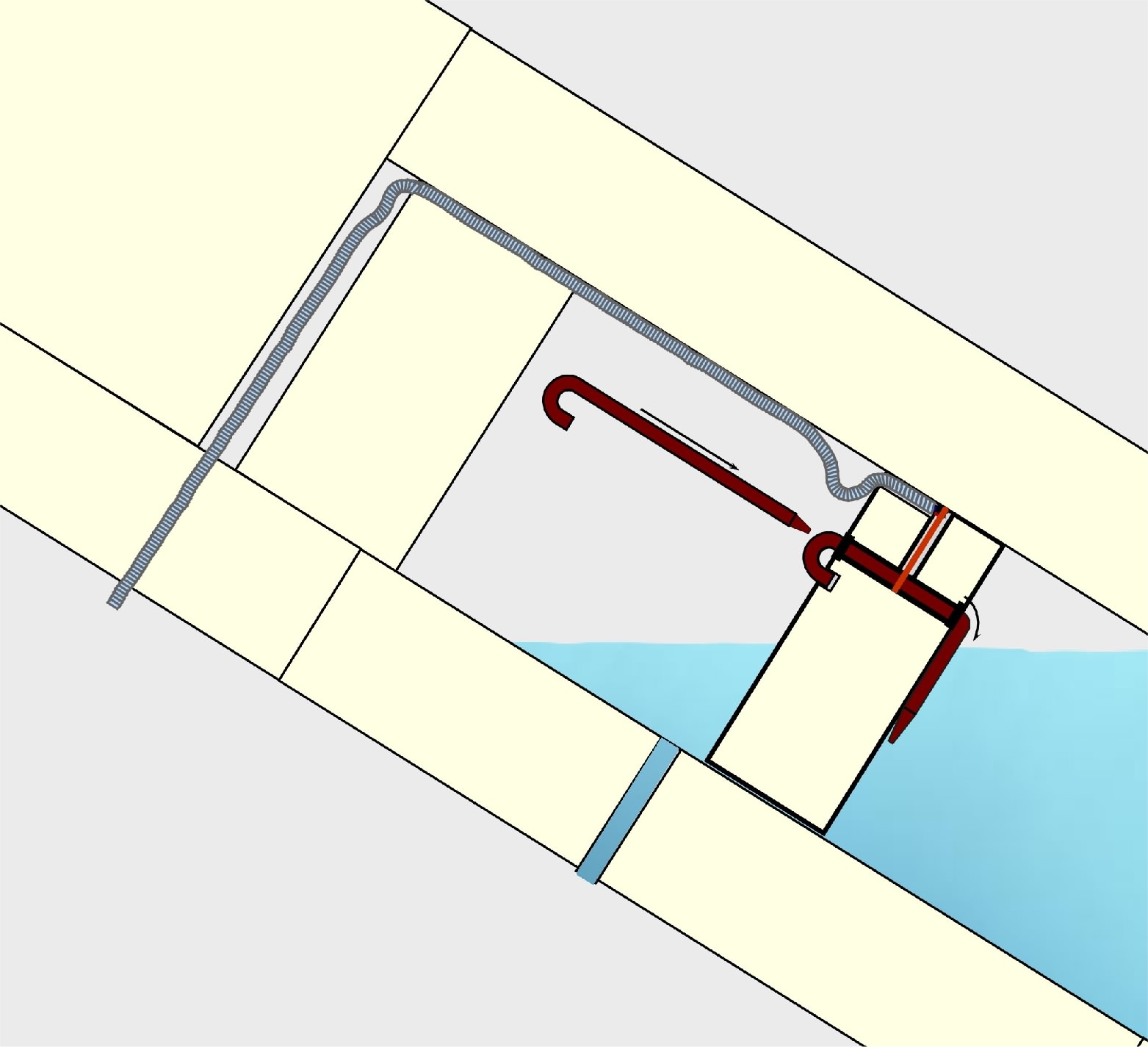
Figure 8. Maintaining the fluid levels in the pyramid shafts.
The author would like to thank the following people for their input and advice while preparing this article:
Dr. Arlan Andrews.
Stephen Mehler
Judd Peck Esq.
Tom Neal
Dr. John DeSalvo
Gantenbrink’s “door” Revisited in 2010! 2011?
Latest News on 2010 2011 Exploration of Great Pyramid Shafts:
11/29/2010 No word on the much hyped exploration of the shafts. Perhaps 2011 will bring some news.
http://www.abovetopsecret.com/forum/thread492079/pg1
http://www.gizapyramid.com/Shaft%20Exploration%202005.htm
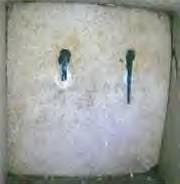
So-called but incorrectly named “door” in the Great Pyramid
Chris Dunn 8/17/2010
For readers who are new to the discussion about Gantenbrink’s so-called “door” at the end of the southern shaft in the so-called “Queen’s Chamber” in the so-called “tomb” of Khufu that is correctly named The Great Pyramid – and for those jaded observers like me who have been waiting for years for continued research beyond this so-called “door” after it was drilled through in 2002 – we can look forward to an event that may overshadow Chasing Mummies in its level of interest as we are told that further explorations using an updated robot. This robot, the product of Leeds University in England has presumably been trial tested and approved by Dr. Zahi Hawass, the exuberant Chairman of Egypt’s Supreme Counsel of Antiquities.
Evidently, work has already been done by the University and a major breakthrough has been made. Hawass is staying quiet about what the breakthrough is and no further information or photographs/video has been released.
The lead scientist on the project, Dr Robert Richardson of the Leeds University School of Mechanical Engineering, gives the impression that he is not phased by the politics of Egyptology and told theIndependent newspaper in the UK:
“We have been working on the project for five years,” he said. “We have no preconceptions. We are trying to gain evidence for other people to draw conclusions. There are two shafts. The north shaft is blocked by a limestone door and nothing has penetrated that door. With the south shaft a previous team has measured the thickness of the stone, drilled through it and put a camera through it and found there was another surface. We are going to determine how thick that is and we could drill through it. We are preparing the robot now and expect to send it up before the end of the year. It’s a big question, and it’s very important not to cause unnecessary damage. We will carry on until we find the answer. We hope to get all the data possible which will be sufficient to answer the questions.”
Just in case new information is forthcoming, and to weigh in on the discussion. Those who may have followed the discussion back in 2000 – 2002, may remember a prediction I made about what will be found behind Gantenbrink’s “door.” My prediction has not changed and the articles I wrote back then are relevant still. The time is coming again for the theory described in The Giza Power Plant to be validated or proven false. Theories about the purpose of features within the Great Pyramid must be agree with the overall theory regarding its original purpose. By reading the links provided below, you will see that in 2002, The Giza Power Plant was the only theory left standing.
Beyond Gantenbrink’s “Door” The Giza Power Plant hypothesis predicts what was found on the other side of Gantenbrink’s “door.” What is behind Gantenbrink’s “Door”Any explanation for the Great Pyramid has to explain all known features. Since its discovery, much has been written and speculated about what lies hidden behind the limestone block at the end of the Southern Shaft in the Queen’s Chamber. Any hypothesis that purports to explain the purpose for the Great Pyramid if true should be able to reasonably predict what lies behind Gantenbrink’s “door.” Based on an engineering analysis, The Giza Power Plant hypothesis lays out such a prediction…
<span”>The Evidence leading to Gantenbrink’s “Door” On Monday, September 16, 2002 at 8:00 PM ET, FOX television (US) will broadcast live from Egypt an exploration of the Southern Shaft in the Queen’s Chamber in the Great Pyramid. Since 1993, when robotics engineer, Rudolph Gantenbrink made his initial exploration of this 8-inch square 200 ft. long mysterious shaft, millions of Egypt watchers around the world have been waiting for the day when additional explorations would take place and a tantalizing barrier to our past would be penetrated.…